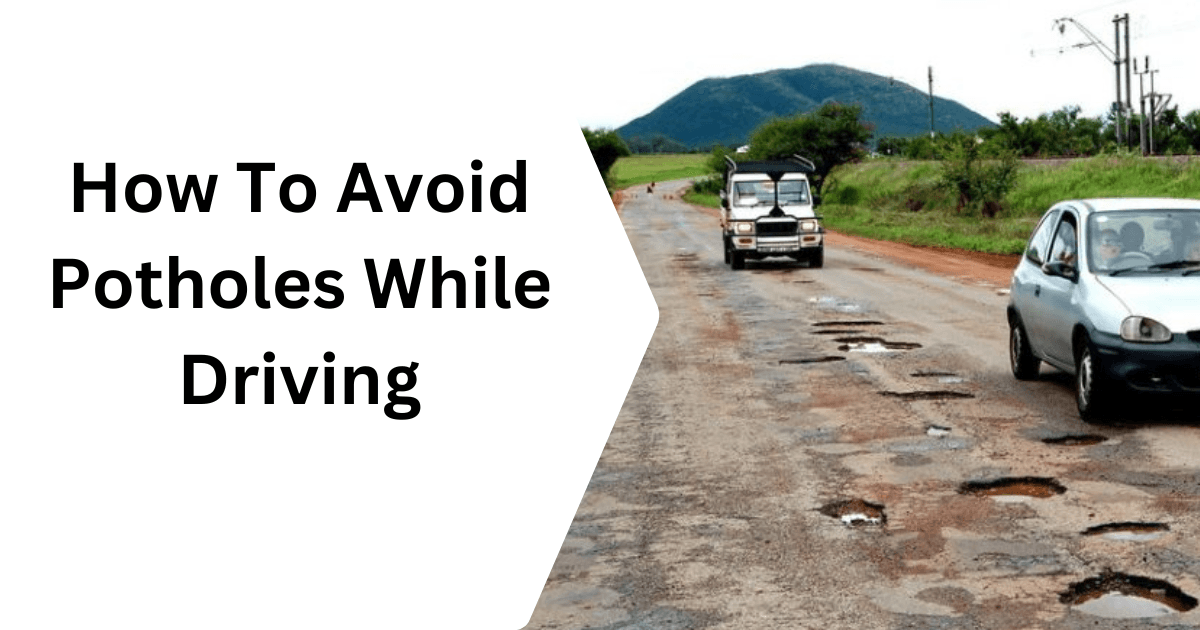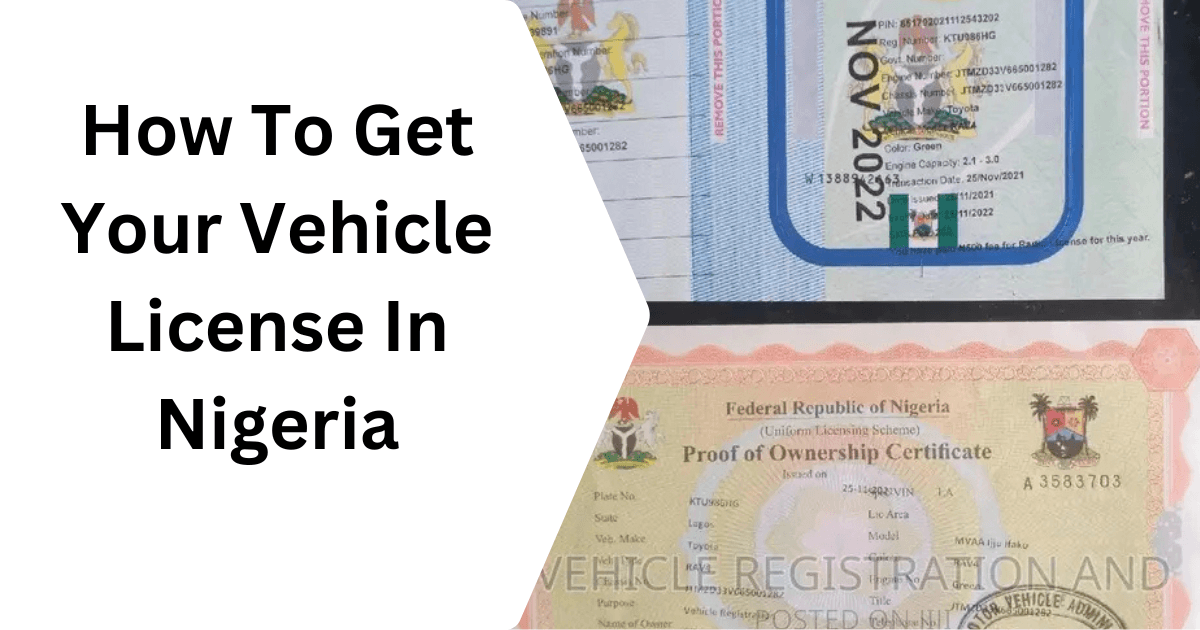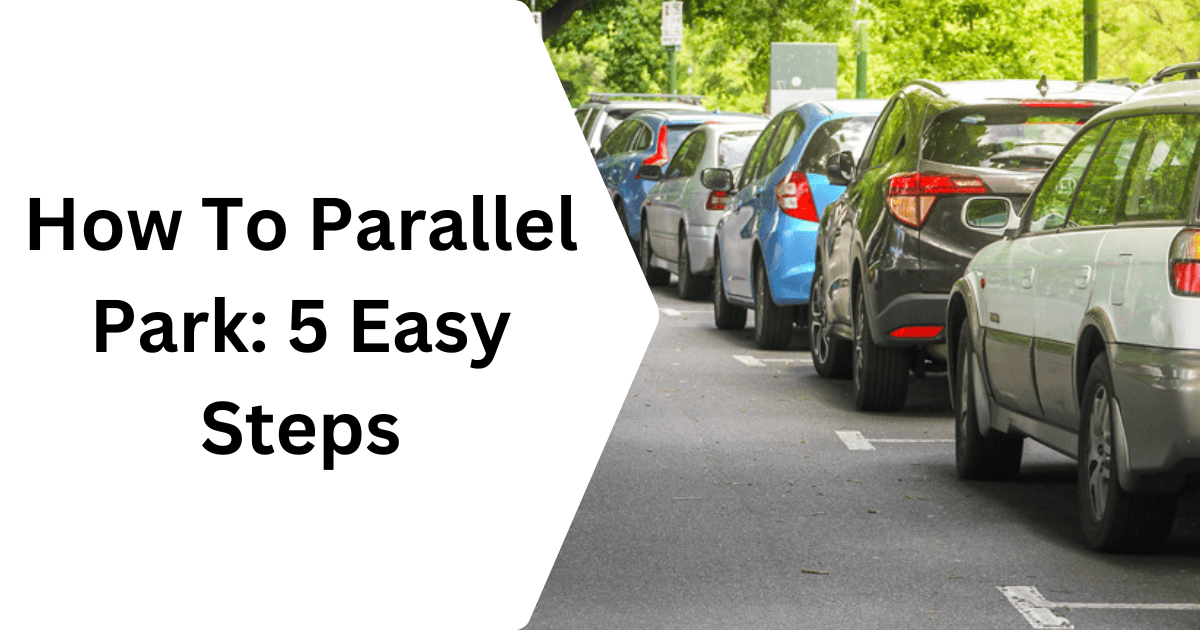Potholes are a common road hazard that can be both frustrating and damaging to your car. Hitting a pothole can lead to costly repairs, like tire punctures, bent rims, or issues with your car’s alignment and suspension. With a few easy tips, you can learn to spot potholes early and steer clear of them whenever possible. This article will guide you through practical ways to avoid potholes and reduce the risk of damage to your car, saving you both time and money.
How To Avoid Potholes While Driving
Keep a Safe Following Distance
Keeping a safe distance from the car in front of you gives you more time to react if they suddenly stop or swerve to avoid a pothole. When you’re too close to the car ahead, you have less time to see what’s coming, especially on roads with many potholes. Staying back allows you to spot potholes in time to steer around them. Following at a safe distance is especially helpful in rainy or low-light conditions, where it’s harder to spot potholes. Water or darkness can hide potholes, making it tricky to react quickly.
Drive Slower on Rough or Unfamiliar Roads
Driving slowly on rough or unfamiliar roads can help you avoid potholes and other unexpected obstacles. On rough roads, potholes can appear suddenly and more often, and driving fast gives you less time to see and avoid them. Going slower on unfamiliar roads also gives you time to understand the road conditions better. When you’re not familiar with a road, you may not know where potholes or other road issues might be, so it’s smart to drive cautiously. Driving slower on these roads also protects your car from serious damage. Hitting a pothole at a lower speed usually causes less harm to your tires, wheels, and suspension than hitting one at high speed.
Stay Focused and Avoid Distractions
Staying focused on the road is key to spotting potholes and other hazards in time. When you’re distracted by things like texting, eating, or adjusting the radio, you’re more likely to miss potholes and risk damaging your car. Keeping your full attention on the road helps you react quickly to any obstacles you see. Avoiding distractions also allows you to notice changes in traffic or sudden moves from other drivers. For example, if a car ahead suddenly swerves, it could mean there’s a pothole or another hazard on the road.
Avoid Large Puddles
It’s smart to avoid large puddles when driving, as they can hide potholes or other hazards that aren’t easy to see. A puddle may look shallow, but it could be covering a deep hole that can damage your tires, wheels, or even your suspension. Driving through large puddles can also make your car lose control, especially at higher speeds. Water can cause your tires to lose grip on the road, leading to hydroplaning, where your car slides on top of the water.
Slowing down or avoiding puddles entirely helps you stay in control, especially in rainy weather. Additionally, puddles can splash water onto other parts of your car, including the brakes, which may reduce their effectiveness for a short time.
Keep Your Tires Properly Inflated
Keeping your tires at the right pressure helps your car handle potholes better. When tires are properly inflated, they have a better grip on the road, which makes it easier to control your car and reduces the risk of damage if you hit a pothole. Underinflated or overinflated tires, on the other hand, are more likely to get damaged, leading to flats or even tire blowouts.
Properly inflated tires also help your car ride more smoothly and improve fuel efficiency. Tires with the correct pressure can absorb shocks from bumps or small potholes, keeping your drive comfortable and reducing wear and tear on your car. Check your tire pressure regularly, especially before long drives, to make sure it’s within the recommended range.
Learn Defensive Driving Techniques
Defensive driving means staying alert and expecting sudden changes from other drivers or the road itself. When you drive defensively, you’re prepared for things like a car stopping suddenly, a pothole appearing ahead, or someone changing lanes without signaling. This approach keeps you ready to react safely to any surprises on the road.
Being a defensive driver also means you’re less likely to be caught off guard, which helps you protect yourself, your passengers, and others on the road. These habits make driving safer and help prevent damage to your car from unexpected road conditions.
Use Your Mirrors to Check Your Surroundings
Using your mirrors regularly helps you stay aware of cars and obstacles around you, which is especially useful when avoiding potholes. Before swerving to avoid a pothole, check your side and rearview mirrors to make sure the lane next to you is clear. This way, you won’t accidentally move into another car’s path while trying to avoid damage.
Your mirrors also help you stay safe in heavy traffic. When you know what’s around you, you can make better decisions if you need to change lanes or adjust your speed suddenly. Staying aware of nearby vehicles allows you to react smoothly and safely if an obstacle appears on the road.
What To Do If You Can’t Avoid a Pothole
- Slow Down: If you see a pothole and can’t avoid it, reduce your speed as much as possible before reaching it. Slowing down helps lessen the impact on your tires and suspension, which can help prevent serious damage. Avoid slamming on the brakes at the last second, as this can put extra stress on your car.
- Hold the Steering Wheel Firmly: Keep a firm grip on the steering wheel to maintain control when going over the pothole. Potholes can cause sudden jolts, and holding the wheel steady will help you keep your car straight and avoid swerving into other lanes.
- Drive Straight Through: If you must drive over a pothole, do so while keeping your car straight. Avoid turning the wheel or swerving at the last moment, as this can make the impact worse and lead to damage. Going straight helps distribute the impact more evenly across your tires.
- Check for Damage Afterward: Once you’re safely past the pothole, check for any signs of damage, such as strange noises, a wobbly steering wheel, or low tire pressure. Inspecting your car helps you spot any issues early and avoid further problems down the road.
FAQs
1. How can potholes damage my car?
Potholes can cause a variety of damages to your car, including tire punctures, bent rims, and misalignment of the wheels. When a tire hits a pothole, the force can create cracks or bulges in the tire, making it more prone to blowouts. Potholes can also damage the suspension system, leading to costly repairs. Staying alert and avoiding potholes helps protect your car from these common problems.
2. Why is it important to slow down for potholes?
Slowing down before hitting a pothole reduces the impact on your tires and suspension. Hitting a pothole at high speed increases the force of the impact, which can lead to more severe damage to your car. Reducing your speed allows the car to absorb the shock more evenly and lowers the chances of punctures, wheel misalignment, or suspension issues.
3. Can driving with underinflated tires make pothole damage worse?
Yes, underinflated tires are more likely to get damaged by potholes because they have less cushion and are more vulnerable to impact. Properly inflated tires provide better protection and absorb shocks more effectively, reducing the risk of punctures or blowouts. Regularly checking your tire pressure ensures your tires are in the best condition to handle rough road surfaces.
4. How can I safely avoid a pothole if I spot it last-minute?
If you spot a pothole at the last minute, try to slow down gently without slamming on the brakes. Check your mirrors to ensure it’s safe, then steer smoothly around the pothole if possible. Avoid sudden swerving, as this can cause loss of control or lead to an accident. A firm grip on the steering wheel and a quick check of your surroundings are essential for avoiding potholes safely.
5. What should I do if my car feels different after hitting a pothole?
If your car feels strange, like if there’s a wobble in the steering or unusual noises, it’s best to have it checked by a mechanic. Pothole impacts can misalign the wheels or damage the suspension, which can affect how your car handles. Early checks can help prevent further damage and keep your car safe for future drives.
Driving safely around potholes is all about staying alert and driving carefully. Follow these tips to protect your car and yourself on the road. If you’d like more driving advice, check out our other guides!




